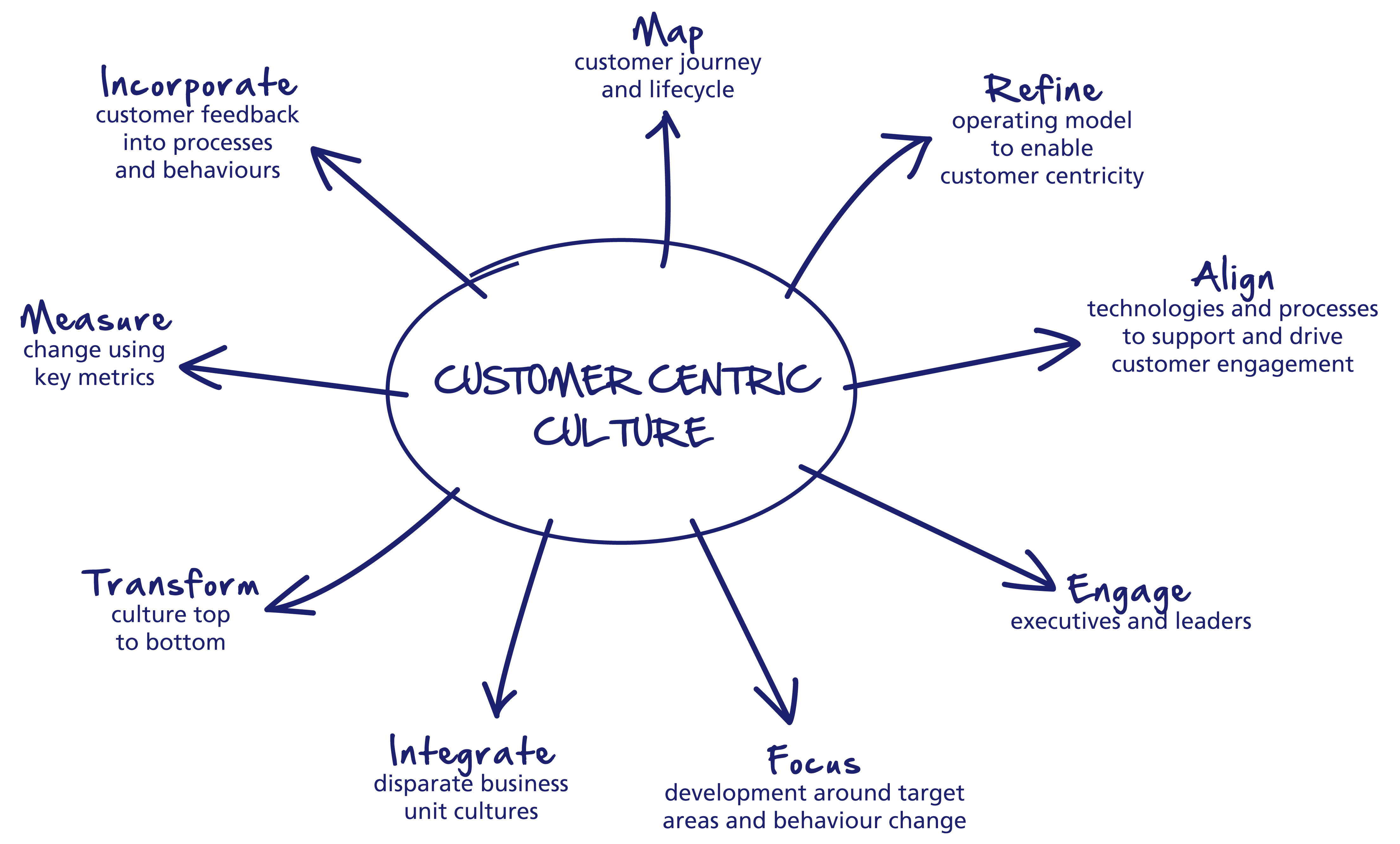Tips for Creating a Customer-Centric Organization

Client satisfaction is more important than ever. No matter the industry, customers will make comments—online and off—that affect the future of your business. Entrepreneurs must prioritize Customer Success (CS) and teach teams to deliver exceptional service that builds meaningful relationships with clients.
Blount goes on to explain that this change puts, “advocacy, referrals, and personal recommendations on a new pedestal of importance.” Potential customers believe the things they hear and read about your business. Taking steps to ensure clients say GOOD things is imperative.
Here is how to deliberately create a customer-centric organization that builds long-lasting client relationships, and in turn, a solid reputation.
Make it easy to work with you
To create a successful CS organization, be nimble and flexible on processes and services. There will always be elements that an organization must keep intact to function, such as using a CRM system, maintaining your service level agreements and setting critical operational processes. However, there are variables that you can augment to make working with your partners easier.
Adapting to a client’s workflow (when you can) helps to build rapport, trust and a strong partnership that can weather the unforeseen events that inevitably happen in a business relationship.
That said, don’t sacrifice your core values or overpromise—a common mistake entrepreneurs make, especially in the technology industry. It is not feasible to say “yes” to every one-off request. You can be easy to work with without changing your value proposition.
Be flexible internally, too
Don’t be afraid to try new things as you consider how to best support your customers. For example, we restructured our CS team to find what works best. First, we divided our team by type of client. As we grew, we moved to a regional structure in which team members support all clients within a particular region. This made it easier to build strong relationships because our team understands the nuances of each region.
Remove the element of fear
If your employees are disgruntled, customers feel it. All your employees, especially the CS team, need to feel invested in and secure. To do so, make it OK to fail. Tell your team (and show your team) that if they make a mistake, you will be there to help correct it and put processes in place to prevent it from happening again.
An example of this is when a new team member accidentally inserted the wrong creative for a campaign and we had to refund a client. These mistakes happen, but we can future proof this type of situation, change the process, or even build something into our User Interface to insure this mistake doesn’t happen again. People are going to make mistakes and that’s ok, but it’s important to use the opportunity as a great lesson learned, allowing us to teach these lessons to future employees. As a business owner, accept that mistakes are going to occur, especially if you are encouraging people to make bold, swift decisions.
Create a bond strong enough to withstand problems
Customer Success means owning the “sale after the sale,” and sometimes, that means conflict resolution. This could mean a client is unhappy because a campaign didn’t perform as expected or an ad didn’t render properly. But thanks to strong emotional connections with customers, they trust you to reconcile the issue.
To build a high level of trust, understand your clients’ goals. Ask them about their objectives and challenges. Understand the environment they operate in and how their success is evaluated.
Hire with care
Client Success requires the right fit for the right role. You cannot find success unless you have the right people. Be painstaking about your hiring. When hiring with CS in mind, look for people with exceptional communication skills and the ability to learn quickly and navigate conflict. These attributes, along with culture fit, matter more than industry experience. It is important to ask insightful questions during the interview process to ensure that the candidate is a good fit for your organization and you are a good fit for them! Be sure that you will be mutually able to achieve each other’s most important needs.




Leave a Comment